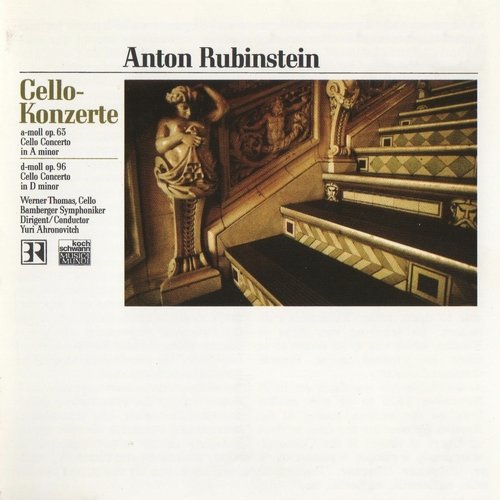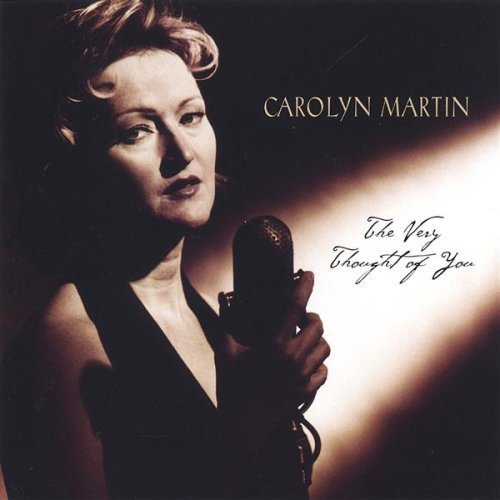Werner Thomas - Anton Rubinstein: Cello concertos (1990)

Artist: Werner Thomas
Title: Anton Rubinstein: Cello concertos
Year Of Release: 1990
Label: Koch Schwann Musica Mundi
Genre: Classical
Quality: FLAC (image+.cue,log,scans)
Total Time: 01:04:01
Total Size: 297 Mb
WebSite: Album Preview
Tracklist: Title: Anton Rubinstein: Cello concertos
Year Of Release: 1990
Label: Koch Schwann Musica Mundi
Genre: Classical
Quality: FLAC (image+.cue,log,scans)
Total Time: 01:04:01
Total Size: 297 Mb
WebSite: Album Preview
Anton Rubinstein (1829 — 1894).
Cello Сoncerto № 1 a-moll, op. 65 (1850).
01. I. Moderato con moto [12:07].
02. II. Adagio [09:59].
03. III. Allegro con fuoco [12:31].
Cello Сoncerto № 2 d-moll, op. 96 (1874).
04. I. Allegro moderato [11:26].
05. II. Andante [05:20].
06. III. Allegro [12:14].
Performers:
Werner Thomas (cello).
Bamberger Symphoniker.
Conductor Yuri Aronovich
In his lifetime, Anton Rubinstein (1829-1894) was most celebrated as a pianist and was often considered Liszt's only real rival. However, he was also an extremely productive composer, his output including eight concertos, two of which are for 'cello.
These concertos are moderately attractive but no more. The fact that many of the melodies are not sufficiently distinctive to be truly memorable would matter less if development sections were in any way compelling. Contrapuntal interest is almost entirely absent and the music is often padded out with cadenzas and recitative-like passages. Extended expositions, perfunctory developments and abbreviated recapitulations result in poorly proportioned first movements. However, there are redeeming features. The First Concerto's finale includes one lovely melody and the main theme of Second Concerto's finale is undeniably catchy and is most effectively treated.
The First Concerto, in A minor, is unusual in that it opens with an idea which is never stated in toto by the soloist. The real main theme is reserved for the cello. The orchestral exposition does, however, include the second subject. The solo exposition's third idea is a descending scalic idea. A cadenza followed by a variant of the second subject on the clarinet form the "development" section. Another cadenza ushers in the truncated "recapitulation" which merely restates the main 'cello theme. There is a brief coda.
The slow movement is an improvement on the first. It is an easily followed ternary structure. The main theme opens promisingly but its continuation is less memorable. However, the music always has an attractive lyrical flow.
After a rhetorical introduction, the soloist states the finale's main theme. The outstanding episode in this movement begins at 7 mins 27 secs when the soloist introduces a lovely new tune which the woodwind decorate with fragments of the main theme. A melodramatic interlude, replete with diminished sevenths, is of little musical value but forms an effective contrast with an ensuing restatement of the tune now led by the strings and decorated by the soloist. Surprisingly, the main theme does not return. The concerto ends in virtuoso fashion.
The Second Concerto, in D minor, is shorter than the First and a better work. The opening movement's main theme is a real tune and the second subject is also attractive although, as is often the case with Rubinstein's tunes, it is inclined to ramble. As in the First Concerto, the development section is hardly compelling. Again the recapitulation is severely truncated.
Rubinstein was often criticized for adopting too westernized an approach to composition but the slow movement of this concerto includes a theme for clarinets and bassoons which is clearly reminiscent of Russian hymns or chants. It acts as linking material between the sections of a ternary structure. This is a lovely movement which does not outstay its welcome.
The finale begins with a declamatory introduction. Then a chugging accompaniment introduces the folky main theme. It is an irresistible fragment which is repeated many times with the soloist providing varying accompaniments, a typically Russian compositional device of course. The contrasting lyrical material is more conventional but there is a lively coda. Whatever the booklet writer says, it hardly generates a "whirlwind of sound", however.
Werner Thomas is a superb soloist and the orchestra also makes an excellent contribution. The recording is well balanced and warm.
These concertos are moderately attractive but no more. The fact that many of the melodies are not sufficiently distinctive to be truly memorable would matter less if development sections were in any way compelling. Contrapuntal interest is almost entirely absent and the music is often padded out with cadenzas and recitative-like passages. Extended expositions, perfunctory developments and abbreviated recapitulations result in poorly proportioned first movements. However, there are redeeming features. The First Concerto's finale includes one lovely melody and the main theme of Second Concerto's finale is undeniably catchy and is most effectively treated.
The First Concerto, in A minor, is unusual in that it opens with an idea which is never stated in toto by the soloist. The real main theme is reserved for the cello. The orchestral exposition does, however, include the second subject. The solo exposition's third idea is a descending scalic idea. A cadenza followed by a variant of the second subject on the clarinet form the "development" section. Another cadenza ushers in the truncated "recapitulation" which merely restates the main 'cello theme. There is a brief coda.
The slow movement is an improvement on the first. It is an easily followed ternary structure. The main theme opens promisingly but its continuation is less memorable. However, the music always has an attractive lyrical flow.
After a rhetorical introduction, the soloist states the finale's main theme. The outstanding episode in this movement begins at 7 mins 27 secs when the soloist introduces a lovely new tune which the woodwind decorate with fragments of the main theme. A melodramatic interlude, replete with diminished sevenths, is of little musical value but forms an effective contrast with an ensuing restatement of the tune now led by the strings and decorated by the soloist. Surprisingly, the main theme does not return. The concerto ends in virtuoso fashion.
The Second Concerto, in D minor, is shorter than the First and a better work. The opening movement's main theme is a real tune and the second subject is also attractive although, as is often the case with Rubinstein's tunes, it is inclined to ramble. As in the First Concerto, the development section is hardly compelling. Again the recapitulation is severely truncated.
Rubinstein was often criticized for adopting too westernized an approach to composition but the slow movement of this concerto includes a theme for clarinets and bassoons which is clearly reminiscent of Russian hymns or chants. It acts as linking material between the sections of a ternary structure. This is a lovely movement which does not outstay its welcome.
The finale begins with a declamatory introduction. Then a chugging accompaniment introduces the folky main theme. It is an irresistible fragment which is repeated many times with the soloist providing varying accompaniments, a typically Russian compositional device of course. The contrasting lyrical material is more conventional but there is a lively coda. Whatever the booklet writer says, it hardly generates a "whirlwind of sound", however.
Werner Thomas is a superb soloist and the orchestra also makes an excellent contribution. The recording is well balanced and warm.








![Stille Grender, Eva Bjerga Haugen - Svart senker natten seg (2025) [Hi-Res] Stille Grender, Eva Bjerga Haugen - Svart senker natten seg (2025) [Hi-Res]](https://www.dibpic.com/uploads/posts/2025-12/1765550212_ktbxqyoaitggb_600.jpg)